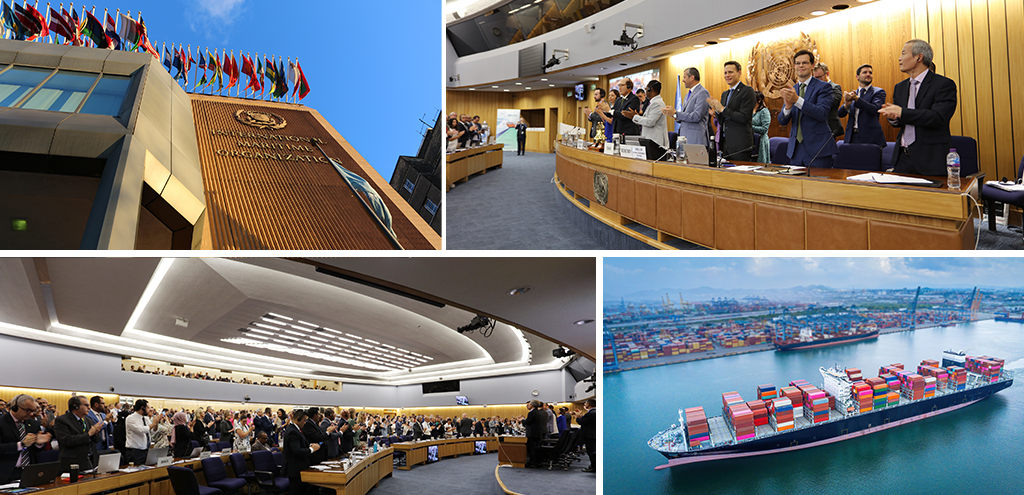
Credit:IMO
The International Maritime Organization (IMO) has approved the 2023 Strategy on Reduction of Greenhouse Gas (GHG) Emissions from Ships. This decision, reached at the Marine Environment Protection Committee (MEPC 80) meeting, signals a major leap toward decarbonizing the maritime industry.
Enhanced Targets for a Greener Future
The revised IMO GHG Strategy outlines a collective commitment to achieve net-zero GHG emissions from international shipping by the year 2050. Additionally, there is a concerted effort to promote the use of alternative zero and near-zero GHG fuels by 2030. IMO Secretary-General Kitack Lim emphasizes the significance of unanimous support from all Member States, underlining the need to address the concerns of developing countries, especially Small Island Developing States (SIDS) and Least Developed Countries (LDCs).
Clear Direction and Ambitious Goals
Lim describes the adoption of the 2023 IMO Greenhouse Gas Strategy as a pivotal moment, marking the beginning of a comprehensive effort towards maritime decarbonization. The strategy aims to guide the industry with a clear direction, a common vision, and ambitious targets. However, Lim emphasizes that this is just the starting point, and intensified efforts are necessary in the years and decades ahead.
Key Elements of the 2023 IMO GHG Strategy
The strategy envisions a phased reduction in the carbon intensity of ships, emphasizing improvements in energy efficiency for new vessels. It targets a substantial decrease in CO2 emissions per transport work, with a 40% reduction by 2030 compared to 2008 levels. Furthermore, the strategy aims for the uptake of zero or near-zero GHG emission technologies, representing 5% to 10% of the energy used by international shipping by 2030.
Indicative Checkpoints and Mid-Term Measures
To ensure progress, the strategy sets indicative checkpoints. By 2030, the goal is to reduce total annual GHG emissions by at least 20%, striving for 30%, compared to 2008. By 2040, a more ambitious target is set, aiming for a reduction of at least 70%, striving for 80%. The strategy proposes a basket of mid-term GHG reduction measures, including a goal-based marine fuel standard and a maritime GHG emissions pricing mechanism.
Consideration for Developing Countries
Recognizing the special needs of developing countries, especially SIDS and LDCs, the strategy emphasizes the assessment of impacts on states before adopting measures. A comprehensive list of initiatives supporting GHG emissions reduction, such as the IMO Integrated Technical Cooperation Programme and the Global Maritime Technologies Cooperation Centres Network, is outlined in the strategy.
Future Steps and Timeline
The strategy outlines a timeline leading to the adoption of measures and the updated 2028 IMO GHG Strategy. MEPC meetings in the coming years will play a crucial role in finalizing and reviewing measures, with the aim of achieving net-zero GHG emissions from international shipping.
In conclusion, the adoption of the 2023 IMO GHG Strategy is a monumental step towards a sustainable and decarbonized future for global shipping.
Credit:IMO

